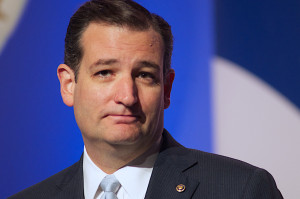By Virginia Villa
Last night, Americans across the country watched intently as Iowans gathered to vote for the first time in the 2016 election. With most expert polls predicting Donald Trump and Hillary Clinton to come out on top in the Iowa caucuses, many were surprised to see Ted Cruz trump Trump by 3.4% (reported by the New York Times). A favorite among Republican voters and independents alike, Donald Trump has held a huge lead in the polls for months, but as the election nears closer, the Iowa caucuses signal a profound turning point in this year’s presidential run, which may serve to be Trump’s undoing.
What’s more, the Democratic candidate results turned out vastly different than most of the popular polls. Though most polls gave Hillary Clinton a wide lead resulting in a win, Bernie Sanders and Clinton were neck-and-neck as the final votes were being counted, ultimately resulting in a narrow win for Clinton by barely one point. Sanders and Clinton were within tenths of a point of one another, with Hillary holding a slowly, then rapidly, shrinking lead over the course of the caucus.
The Iowa caucuses are the first time Americans come out to vote during an election year, and the winners are typically favored to represent their parties in the general election in November. This year’s election has been unique from others in the amount of speculation surrounding the results. Unlike other election cycles, it has been hard to find consensus on who should get the nominations. Until Bernie Sanders joined the race, Clinton was seen as the undeniable choice of the Democratic Party, meanwhile, leaders of the Republican Party have openly denounced its most popular candidate, Donald Trump. What this signifies for the country is a more pronounced division of support for the candidates within the parties, rather than the division between the parties on policy stances. Now more than ever, the parties seem to be lost in terms of finding a leader. There is a disconnect between the politicians and the voters, with voters rallying behind unlikely candidates like Trump, while candidates like Marco Rubio, popular among the leaders in their party, are failing to garner as much public support.
All of the uncertainty points back to the changing faces of the parties, as the people who go out to vote now are less and less the upper-middle class, white American with moderate political views. This change has allowed more radical candidates to receive incredible amounts of support, amounts that would be unthinkable even in the last election cycle, while former party champions appear to be taking a backseat. The future seems uncertain, but if one thing is clear, it is that the face of American politics is changing quickly.

